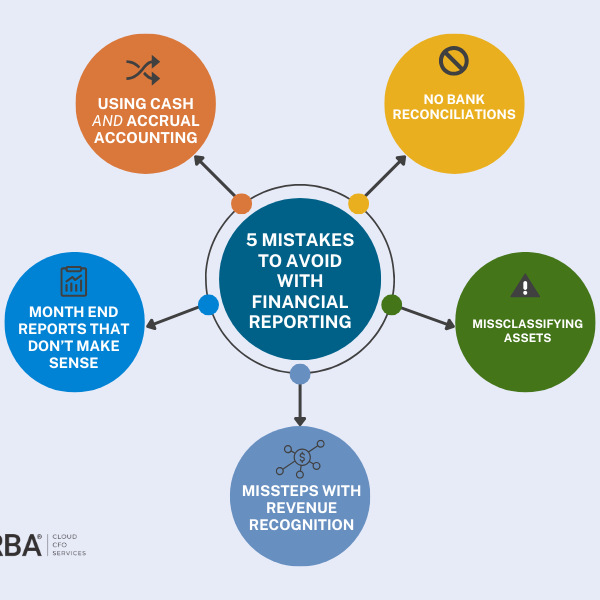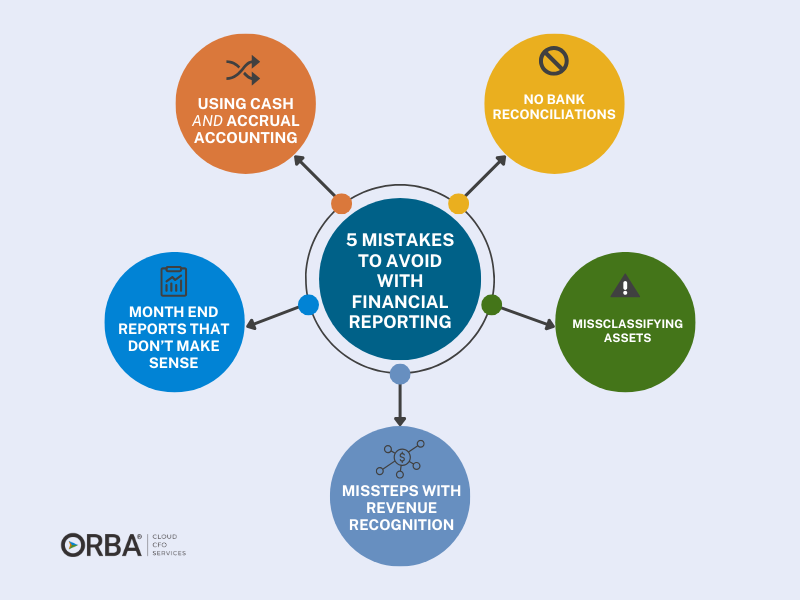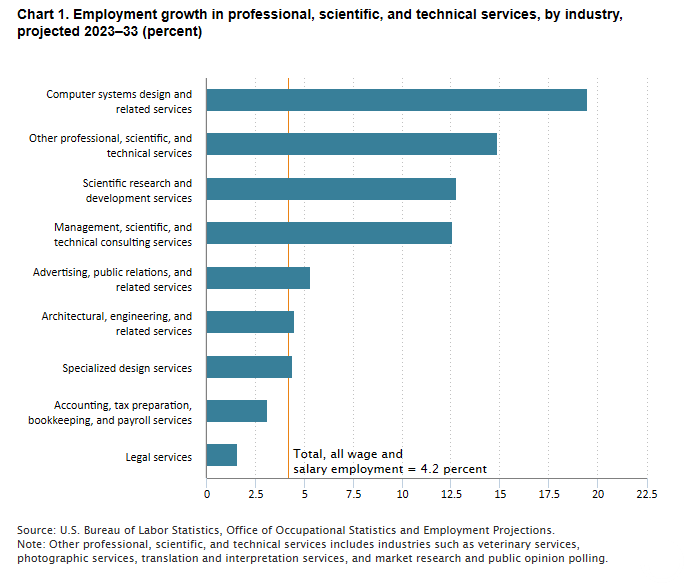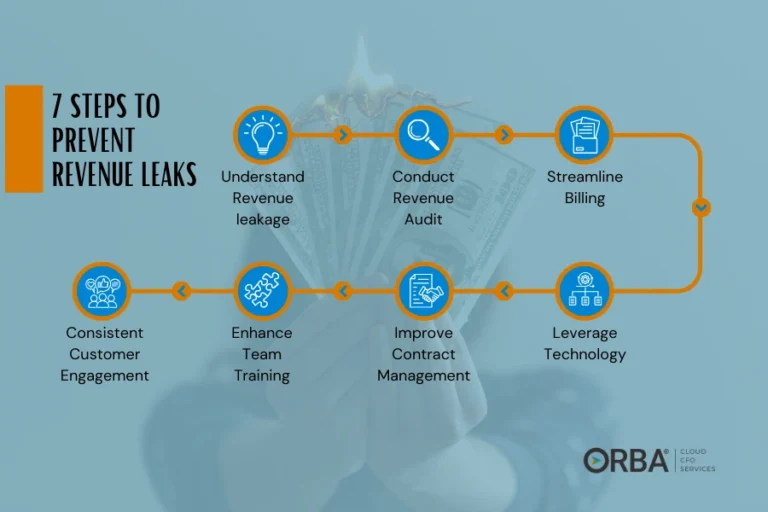Even the most seasoned businesses will run into some financial reporting mistakes that can jeopardize their financial health and decision-making. From inconsistent data to fragmented reporting systems, these challenges can hinder growth, compliance, and strategic planning.
In this article, we’ll explore some of the most common financial reporting red flags and the fix to maintain long-term success.
Financial Reporting Mistake #1:
A “mix” of cash and accrual accounting
Many businesses struggle with a hybrid approach that combines elements of cash and accrual accounting, making it difficult to get a clear picture of their financial health.
The Fix: Accrual accounting
We almost always recommend our clients use accrual accounting. Accrual accounting provides a clearer and more accurate picture of a business’s financial health. By recording revenues and expenses when they are earned or incurred, rather than when cash changes hands, you can more easily track financial performance over time. It aligns income and expenses to the periods in which they occur. This helps in two ways:
- Offers better insight for decision-making,
- Gives a more consistent and transparent representation of a company’s financial position.
Financial Reporting Mistake #3:
No bank reconciliations
Without proper bank reconciliations, businesses often face challenges in ensuring their records match the bank statements, leading to potential discrepancies in financial reporting.
The Fix: On-time reconciliations
Timely reconciliations are essential for maintaining accurate financial records and identifying potential issues as they arise. By ensuring all transactions are accounted for promptly, businesses can avoid costly errors, detect fraud early, and maintain a clear picture of their cash flow. On-time reconciliations also support better decision-making by providing real-time financial insights and fostering trust with stakeholders through accurate and transparent reporting.
Financial Reporting Mistake #3:
Inability to generate a connected income statement, balance sheet, and cash flow
A lack of integration between financial statements means businesses can’t easily see how revenue, expenses, and cash flow tie together, making strategic decision-making harder.
Related Read: Difference between P&L vs. Balance Sheet
Major gaps with disconnected, or inconsistent financial reporting
- Lack of visibility into financial performance trends, making it difficult to identify areas of strength and weakness.
- Poor cash flow management, potentially leading to overspending or missed opportunities for investment.
- Difficulty in demonstrating financial stability to investors, lenders, or other stakeholders, which could hinder access to funding.
- Increased risk of errors or inconsistencies in financial data, leading to potential compliance issues or inaccurate reporting.
- Reduced ability to make informed strategic decisions due to incomplete or unreliable financial information.
The Fix: Automate and integrate systems wherever possible
Adopt an integrated financial reporting system. Such systems automatically link and synchronize data across these key financial documents, for a comprehensive view of the company’s financial health. Additionally, these tools enable the generation of real-time, accurate reports, simplifying the process of monthly financial reviews and fostering informed decision-making. For example, if you’re running an inventory-heavy business we really encourage NetSuite vs. QuickBooks to streamline operations.
Financial Reporting Mistake #4:
Missteps in Revenue Recognition
One frequent financial reporting mistake is improper revenue recognition. This typically arises when there’s a lack of knowledge around revenue recognition principles, leading to revenue being recorded too early, too late or not at all. This can significantly skew results.
The Fix: Internal controls
To address this, make sure you are thoroughly acquainted with the revenue recognition principle and any industry-specific regulations. Establish strong internal controls to ensure revenue is recorded accurately and within the correct reporting period.
Financial Reporting Mistake #5:
Misclassifying Assets and Inaccurate Inventory Valuation
Misclassified assets and liabilities will distort your true financial position. This error often occurs when items are not properly classified based on liquidity. Misvaluing your inventory is like misplacing your wallet—you’ll feel the pain when the numbers don’t add up. A wrong inventory valuation can mess up your COGS, gross profit, and even your net income. Yikes!
Related Read: Inventory Accounting 101: FIFO vs. LIFO
It’s important to note that the choice of inventory valuation method has a direct impact on your COGS, sales, and ultimately, profits. FIFO and LIFO produce a different cost per unit sold, and the difference impacts both your balance sheet (inventory account) and the income statement (cost of goods sold). The average cost is a third accounting method that calculates inventory cost as the total cost of inventory divided by total units purchased. Most businesses in the U.S. use either FIFO or LIFO, while some sole proprietors may opt to use average cost.
The Fix: Choose the best valuation method for your biz and stick with it!
Save yourself the headache: count your stock regularly and choose a valuation method that fits your business vibe, whether it’s FIFO, LIFO, or the good ol’ weighted average. No more guessing games!



